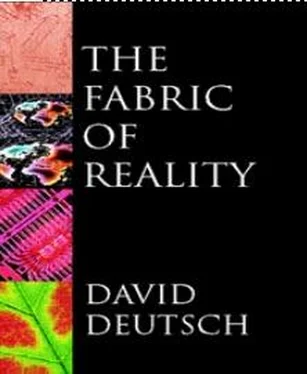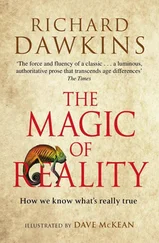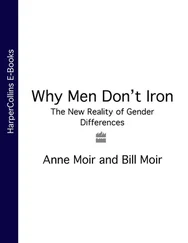David Deutch - The Fabric of Reality
Здесь есть возможность читать онлайн «David Deutch - The Fabric of Reality» весь текст электронной книги совершенно бесплатно (целиком полную версию без сокращений). В некоторых случаях можно слушать аудио, скачать через торрент в формате fb2 и присутствует краткое содержание. ISBN: , Жанр: Физика, Философия, на английском языке. Описание произведения, (предисловие) а так же отзывы посетителей доступны на портале библиотеки ЛибКат.
- Название:The Fabric of Reality
- Автор:
- Жанр:
- Год:неизвестен
- ISBN:0-7139-9061-9
- Рейтинг книги:4 / 5. Голосов: 2
-
Избранное:Добавить в избранное
- Отзывы:
-
Ваша оценка:
- 80
- 1
- 2
- 3
- 4
- 5
The Fabric of Reality: краткое содержание, описание и аннотация
Предлагаем к чтению аннотацию, описание, краткое содержание или предисловие (зависит от того, что написал сам автор книги «The Fabric of Reality»). Если вы не нашли необходимую информацию о книге — напишите в комментариях, мы постараемся отыскать её.
The Fabric of Reality — читать онлайн бесплатно полную книгу (весь текст) целиком
Ниже представлен текст книги, разбитый по страницам. Система сохранения места последней прочитанной страницы, позволяет с удобством читать онлайн бесплатно книгу «The Fabric of Reality», без необходимости каждый раз заново искать на чём Вы остановились. Поставьте закладку, и сможете в любой момент перейти на страницу, на которой закончили чтение.
Интервал:
Закладка:
So living processes and virtual-reality renderings are, superficial differences aside, the same sort of process. Both involve the physical embodying of general theories about an environment. In both cases these theories are used to realize that environment and to control, interactively, not just its instantaneous appearance but also its detailed response to general stimuli.
Genes embody knowledge about their niches. Everything of fundamental significance about the phenomenon of life depends on this property, and not on replication per se. So we can now take the discussion beyond replicators. In principle, one could imagine a species whose genes were unable to replicate, but instead were adapted to keep their physical form unchanged by continual self-maintenance and by protecting themselves from external influences. Such a species is unlikely to evolve naturally, but it might be constructed artificially. Just as the degree of adaptation of a replicator is defined as the degree to which it contributes causally to its own replication, we can define the degree of adaptation of these non-replicating genes as the degree to which they contribute to their own survival in a particular form. Consider a species whose genes were patterns etched in diamond. An ordinary diamond with a haphazard shape might survive for aeons under a wide range of circumstances, but that shape is not adapted for survival because a differently shaped diamond would also survive under similar circumstances. But if the diamond-encoded genes of our hypothetical species caused the organism to behave in a way which, for instance, protected the diamond’s etched surface from corrosion in a hostile environment, or defended it against other organisms that would try to etch different information into it, or against thieves who would cut and polish it into a gemstone, then it would contain genuine adaptations for survival in those environments. (Incidentally, a gemstone does have a degree of adaptation for survival in the environment of present-day Earth. Humans seek out uncut diamonds and change their shapes to those of gemstones. But they seek out gemstones and preserve their shapes. So in this environment, the shape of a gemstone contributes causally to its own survival.)
When the manufacture of these artificial organisms ceased, the number of instances of each non-replicating gene could never again increase. But nor would it decrease, so long as the knowledge it contained was sufficient for it to enact its survival strategy in the niche it occupied. Eventually a sufficiently large change in the habitat, or attrition caused by accidents, might wipe out the species, but it might well survive for as long as many a naturally occurring species. The genes of such species share all the properties of real genes except replication. In particular, they embody the knowledge necessary to render their organisms in just the way that real genes do.
It is the survival of knowledge, and not necessarily of the gene or any other physical object, that is the common factor between replicating and non-replicating genes. So, strictly speaking, it is a piece of knowledge rather than a physical object that is or is not adapted to a certain niche. If it is adapted, then it has the property that once it is embodied in that niche, it will tend to remain so. With a replicator, the physical material that embodies it keeps changing, a new copy being assembled out of non-replicating components every time replication occurs. Non-replicating knowledge may also be successively embodied in different physical forms, for example when a vintage sound recording is transferred from vinyl record to magnetic tape, and later to compact disc. One could imagine another artificial non-replicator-based living organism that did the same sort of thing, taking every opportunity to copy the knowledge in its genes onto the safest medium available. Perhaps one day our descendants will do that.
I think it would be perverse to call the organisms of these hypothetical species ‘inanimate’, but the terminology is not really important. The point is that although all known life is based on replicators, what the phenomenon of life is really about is knowledge. We can give a definition of adaptation directly in terms of knowledge: an entity is adapted to its niche if it embodies knowledge that causes the niche to keep that knowledge in existence. Now we are getting closer to the reason why life is fundamental. Life is about the physical embodiment of knowledge, and in Chapter 6we came across a law of physics, the Turing principle, which is also about the physical embodiment of knowledge. It says that it is possible to embody the laws of physics, as they apply to every physically possible environment, in programs for a virtual-reality generator. Genes are such programs. Not only that, but all other virtual-reality programs that physically exist, or will ever exist, are direct or indirect effects of life. For example, the virtual-reality programs that run on our computers and in our brains are indirect effects of human life. So life is the means — presumably a necessary means — by which the effects referred to in the Turing principle have been implemented in nature.
This is encouraging, but it is not quite sufficient to establish that life is a fundamental phenomenon. For I have not yet established that the Turing principle itself has the status of a fundamental law. A sceptic might argue that it does not. It is a law about the physical embodiment of knowledge, and the sceptic might take the view that knowledge is a parochial, anthropocentric concept rather than a fundamental one. That is, it is one of those things which is significant to us because of what we are — animals whose ecological niche depends on creating and applying knowledge — but not significant in an absolute sense. To a koala bear, whose ecological niche depends on eucalyptus leaves, eucalyptus is significant; to the knowledge-wielding ape Homo sapiens, knowledge is significant
But the sceptic would be wrong. Knowledge is significant not only to Homo sapiens, nor only on the planet Earth. I have said that whether something does or does not have a large physical impact is not decisive as to whether it is fundamental in nature. But it is relevant. Let us consider the astrophysical effects of knowledge. The theory of stellar evolution — the structure and development of stars — is one of the success stories of science. (Note the clash of terminology here. The word ‘evolution’ in physics means development, or simply motion, not variation and selection.) Only a century ago, even the source of the Sun’s energy was unknown. The best physics of the day provided only the false conclusion that whatever its energy source was, the Sun could not have been shining for more than a hundred million years. Interestingly, the geologists and palaeontologists already knew, from fossil evidence of what life had been doing, that the Sun must have been shining on Earth for a billion years at least. Then nuclear physics was discovered, and was applied in great detail to the physics of interiors of stars. Since then the theory of stellar evolution has matured. We now understand what makes a star shine. For most types of star we can predict what temperature, colour, luminosity and diameter it has at each stage of its history, how long each stage lasts, what elements the star creates by nuclear transmutation, and so on. This theory has been tested and borne out by observations of the Sun and other stars.
We can use the theory to predict the future development of the Sun. It says that the Sun will continue to shine with great stability for another five billion years or so; then it will expand to about a hundred times its present diameter to become a red giant star; then it will pulsate, flare into a nova, collapse and cool, eventually becoming a black dwarf. But will all this really happen to the Sun? Has every star that formed a few billion years before the Sun, with the same mass and composition, already become a red giant, as the theory predicts? Or is it possible that some apparently insignificant chemical processes on minor planets orbiting those stars might alter the course of nuclear and gravitational processes having overwhelmingly more mass and energy?
Читать дальшеИнтервал:
Закладка:
Похожие книги на «The Fabric of Reality»
Представляем Вашему вниманию похожие книги на «The Fabric of Reality» списком для выбора. Мы отобрали схожую по названию и смыслу литературу в надежде предоставить читателям больше вариантов отыскать новые, интересные, ещё непрочитанные произведения.
Обсуждение, отзывы о книге «The Fabric of Reality» и просто собственные мнения читателей. Оставьте ваши комментарии, напишите, что Вы думаете о произведении, его смысле или главных героях. Укажите что конкретно понравилось, а что нет, и почему Вы так считаете.












